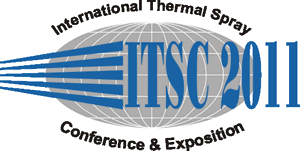
|
| Abstract No.: |
|
Scheduled at:
|
Thursday, September 29, 2011, Saal A 11:45 AM
Young Professionals
|
|
| Title: |
The effect of fracture induced ceramic free surfaces for vacuum kinetic spray bonding
|
|
| Authors: |
Wanghyun Yong* / Kinetic Spray Coating Laboratory, Division of Materials Science and Engineering, Hanyang University, Korea
Gyuyeol Bae / Kinetic Spray Coating Laboratory, Division of Materials Science and Engineering, Hanyang University, Korea
Kicheol Kang/ Kinetic Spray Coating Laboratory, Division of Materials Science and Engineering, Hanyang University, Korea
Changhee Lee/ Kinetic Spray Coating Laboratory, Division of Materials Science and Engineering, Hanyang University, Korea
|
|
| Abstract: |
The new kinetic spray coating technique, vacuum kinetic spray (aerosol deposition), utilizes the pressure gap between powder hopper and coating chamber which is vacuumed. This technique is primarily used for ceramic coatings and a lot of applications have been introduced in the literature. In this study, to examine the vacuum kinetic spray deposition mechanisms, alumina was coated on a glass considering the effect of free surfaces after particle fractures. Free surfaces of the ceramic powders are thermodynamically unstable and have a tendency of formation of bonding. In the coating top view, particles on the glass had plenty of cracks which enlarge particle surface area. The cross-section images of the coating showed that considerable plastic deformation of the fractured particles happened and the particle size of the coating was drastically decreased compared to as-received powders. Based on finite-element modeling (using an AUTODYN-2D 12.1), particle deposition model was proposed, and the model simulated material shape, temperature variation, and mass change due to the fracture of a particle during impact. Total mass change as a function of particle impact velocity demonstrates the optimized velocity zone for successful deposition where fractures at the interface between particle and substrate take place.
|
|
